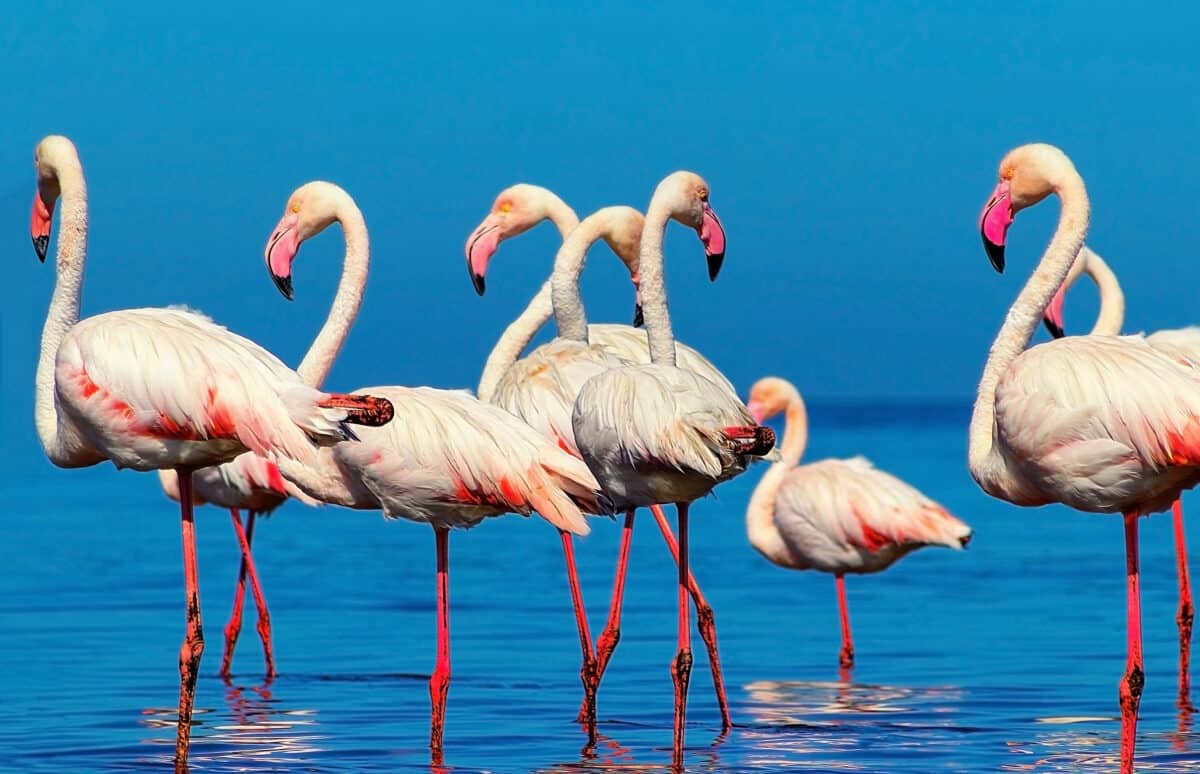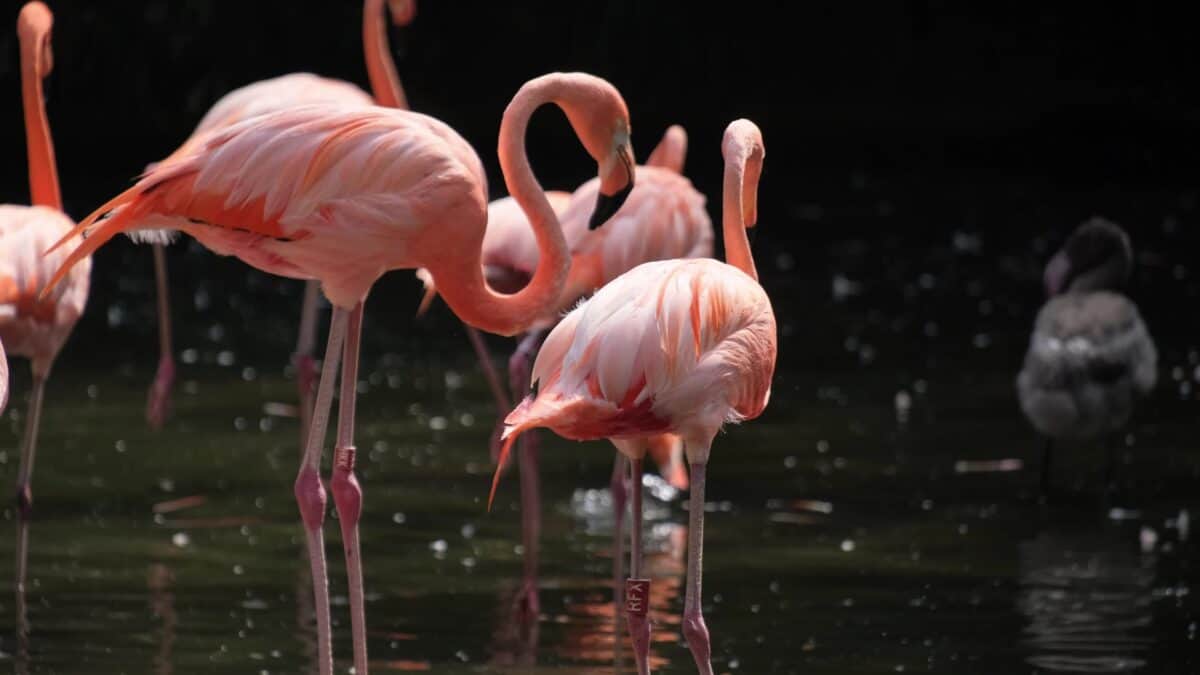Pink, tall, and majestic, the migration of flamingos has long captivated the world with their long-legged stature, enabling them to gracefully roost amidst the tranquil waters of lakes, from Africa and America to Asia and Europe.
Fittingly, you call a group of flamingos a flamboyance, but don’t let their beauty fool you. These birds are as tough as they come, able to adapt to extreme, high-altitude conditions. However, with fewer than 40,000 alive, they’re another species experiencing a rapidly declining population.
Migration of Flamingos

Flamingos undertake courageous migratory journeys each year, travelling thousands with relative ease. For instance, the greater flamingo can travel up to 500 kilometers (310 miles) in a single night during migration.
In Africa, the baron salt pans of Botswana’s Makgadikgadi Pans National Park serve as critical breeding sites for thousands of flamingos. Afterwards, they then travel across the continent, from Tanzania’s Lake Natron to Kenya’s Lake Bogoria and Lake Nakuru.
In the Americas, the iconic pink residents of Florida’s Everglades National Park undertake seasonal migrations, traveling between their nesting sites in the park and feeding grounds along the coast. Additionally, South America hosts sizeable flamingo populations, particularly in the high-altitude lakes of the Andes Mountains, such as Bolivia’s Laguna Colorada and Chile’s Salar de Atacama.
Adaptation to Varied Conditions

Flamingos exhibit remarkable adaptability to diverse environments. For instance, you could spot a flamboyance of flamingos in pristine, saline lakes, or polluted alkaline lagoons and even industrial wastewater ponds. Their specialized beaks are uniquely adapted to filter food from muddy or brackish water, allowing them to thrive in habitats with limited food resources.
In extreme environments like the high-altitude lakes of the Andes, flamingos have developed physiological adaptations to cope with low oxygen levels and intense solar radiation. Their uniquely designed legs, which have evolved to withstand the corrosive effects of saltwater, enable them to wade effortlessly through shallow waters.
Declining Population

Despite their adaptability, flamingos face numerous threats that jeopardize their survival. According to the International Union for Conservation of Nature (IUCN), several species of flamingos are classified as either near threatened or vulnerable.
Habitat loss and degradation, primarily due to urban development, agriculture, and infrastructure projects, pose significant challenges to flamingo populations worldwide. Pollution, including the discharge of industrial effluents and agricultural runoff, contaminates their habitats and diminishes their food sources.

Climate change further exacerbates these threats, altering the availability of suitable breeding and feeding grounds and increasing the frequency and severity of extreme weather events. For example, rising temperatures and reduced precipitation can lead to the drying up of wetlands, depriving flamingos of crucial nesting sites and foraging areas.
Conservation efforts, including habitat restoration, protected area management, and community engagement, are crucial for safeguarding flamingo populations and their habitats. Collaborative initiatives involving governments, conservation organizations, and local communities are essential for addressing the complex challenges facing these iconic birds and ensuring their long-term survival in the wild.

If you enjoyed this piece, you may enjoy these:
- Meet The Largest Flamingo Species
- Flamingo Joins In On A Yoga Class
- The Largest Gathering of Flamingos at Lake Nakuru
Join our Forum for free today!

- Elderly Man Kills Grizzly Bear in Montana - July 22, 2024
- Missing Cat Found Weeks Later, 40 Miles Away - July 21, 2024
- The Fastest Animal on Earth: So, How Quick Are Cheetahs? - July 21, 2024

